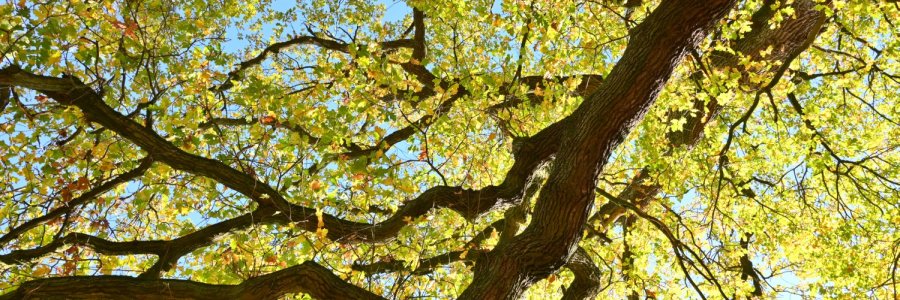An autumn hike in the High Fläming around Belzig
By S-Bahn and regional express train in less than an hour from the center of Berlin to Bad Belzig. Through the city out into the High Fläming. To the old oak tree at the foot of the apple mountain near Hagelberg. To Klein Glien, the linden avenue to the wine hill, through the woods back to Belzig with a new discovery of a special connection of two beeches. Stop at the brewery. Back by train to Berlin. 17 km, five hours glowing in autumn colors.
- Belzig and Eisenhardt Castle
- To the old oak tree at the apple hill near Hagelberg
- In and around Klein Glien
- Back to Belzig and a connection
Belzig and Eisenhardt Castle
From Belzig railway station along the Bahnhofstraße to Eisenhardt Castle, probably the largest high fortress in northern Germany, first mentioned in a document in 997.
Click here for the website of Eisenhardt Castle
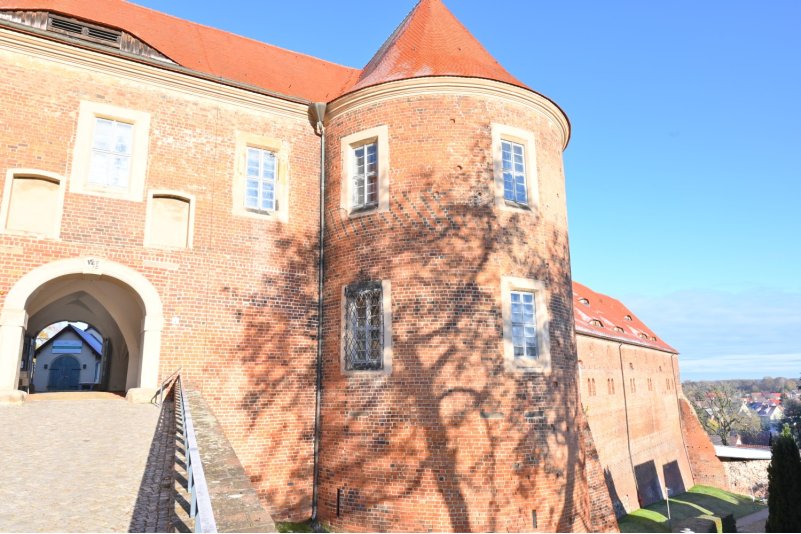
Beautiful lime trees and a supported Norway maple in the castle courtyard. Im Hintergrund der Bergfried. Die alte und große, mehrhundertjährige Winter-Linde (Tilia cordata) mit über 7 m Umfang im Burghof wurde im Jahr 1996 abgetragen. Eine Zeit lang stand noch ihr 3 m hoher Torso, der inzwischen auch verschwunden ist. Eine junge Linde nahe der westlichen Burghofsmauer zeigt noch ihren alten Standort an, sIe wurde im Jahr 2000 in den hohlen Torso der alten Linde gepflanzt.


Unterhalb der Mauer entlang zu einer als Naturdenkmal ausgewiesenen Platane (Platanus × hispanica), mit 3,94 m Umfang in Brusthöhe nicht außergewöhnlich stark, aber sehr hoch gewachsen. Lindenreihe entlang des Belziger Bachs und etwas oberhalb am Hang eine sehr alte Linde, die verbliebene älteste LInde an der Burg.
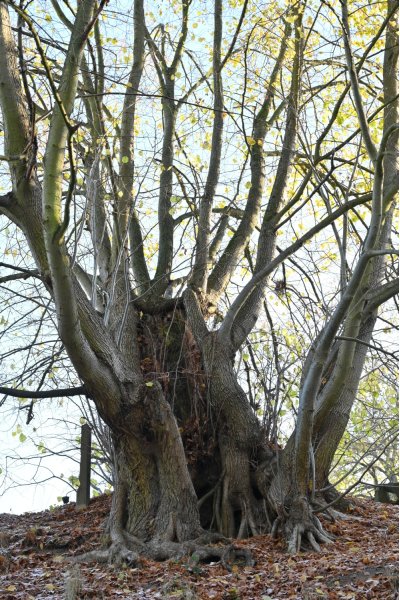

Dann linkerhand Lindenallee Richtung Stadt und weitere Lindenreihe am Kämmererweg mit älterer beuliger Linde. Von hier nicht in die Altstadt sondern gen Westen und fix aus der Stadt hinaus zum Wanderweg nach Hagelberg.
Back to the beginning
To the old oak tree at the apple hill near Hagelberg
Initially along the path strong tall red oaks (Quercus rubra), planted here a long time ago, then up the hill past the French beeches and some populations of larches with single stronger exmplars. A quite varied path with forest borders and open meadows. Beside the already mentioned larches (Larix decidua) shining wonderfully and splendidly yellow now in the late autumn in the sun and against the bright blue sky, individual oak trees and beech populations, which still allow to enjoy the late autumn wonderfully yellow-golden. In addition, rather winterly younger red oak stands in which the light snowfall of the last day and the hoarfrost of the night have lasted into the morning.

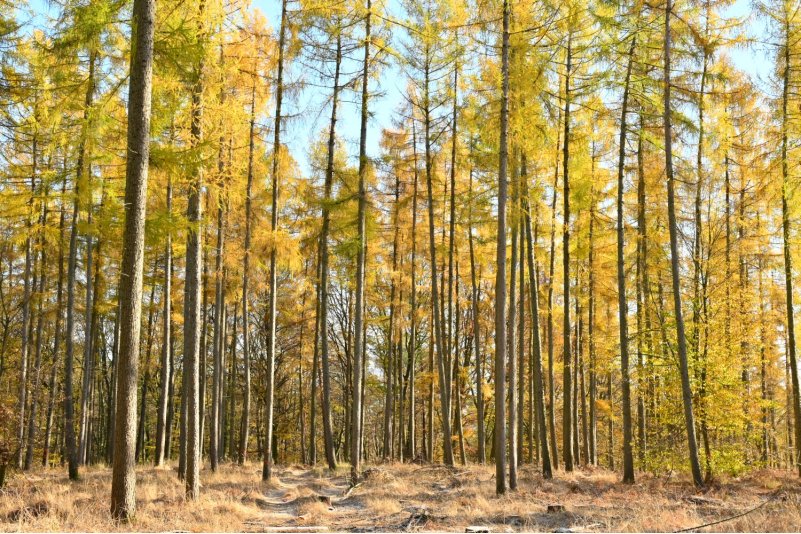
Before reaching Hagelberg, the slopes of the "Apfelberg" (apple mountain), lined with orchards, apple trees (Malus domestica) and sweet cherries (Prunus avium), are to the left and south. A beautiful avenue of apple trees with old specimens can also be found on the way to Hagelberg, which we will leave to the right today.
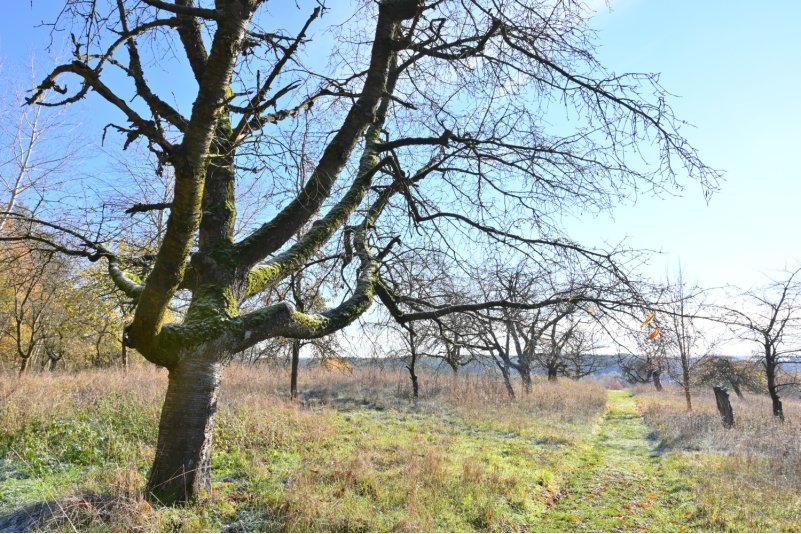
Following the paths of the forest school located here in the "Grützdorf" farm, we descend to the foot of the slope through a beautiful stand of old beech trees to the main destination of our hike, the oak tree at the apple hill near Hagelberg. It has made itself comfortable at the sunny and warm edge of the forest over the last 200-250 years, spreading its crown and gnarled branches widely along the edge of the stand, reaching down to the ground. Possibly two oaks have grown up and grown together close to each other.
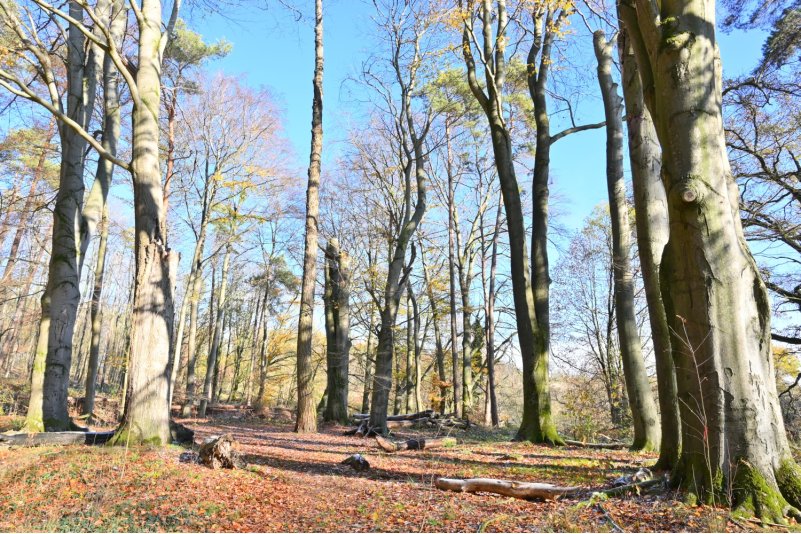
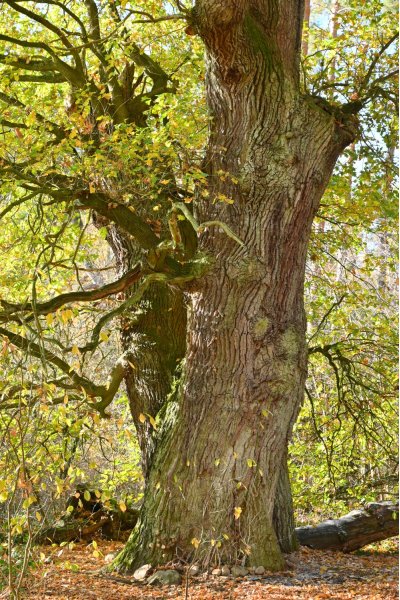

Back to the beginning
In and around Klein Glien
From the oak tree there is the possibility to hike back to the heights and via Hagelberg down to Klein Glien, or to hike directly across the fields to the road Belzig-Wiesenburg and on the bike path to the village. In the village the old manor house, now a hotel and restaurant, diagonally opposite the church with the winter lime tree protected as a natural monument at the entrance to the churchyard at the village street.
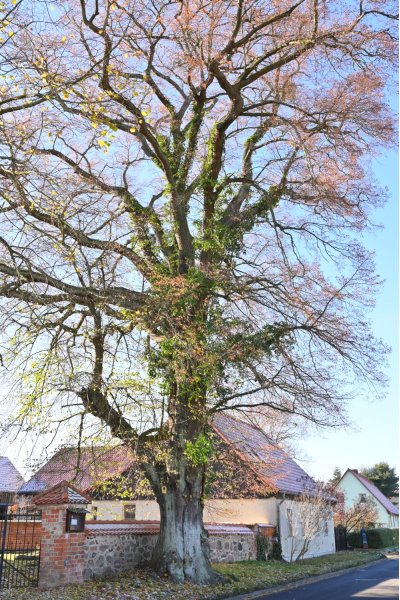
Directly opposite the manor house, the path branches off to the old Vine Hill, an elevation a few hundred metres south of the village. Until 1945, the hereditary burial place of the von Tschirschky estate owners was located there. It was destroyed in 1945 and only remains can be found today. Bemerkens- und sehenswert für Baumfreunde die dichte und geschlossene Lindenallee zum Weinberg, in der sich einige stattliche Exemplare der Silber-Linde (Tilia tomentosa) entdecken lassen. Auf dem Weinberg selbst eine Eiche an den steinernen Resten der Grabsteine, eine Buche an der Westspitze und, besonders schön und beeindruckend, die Reste einer durchgewachsenen Hainbuchenhecke (Carpinus betulus) am Südrand des Weinbergs.


Back to the beginning
Back to Belzig and a connection
From the avenue to the wine hill, a path branches off back to Belzig, crossing the Klein Glien - Borne road and entering the forest after a few yards. The trail leads mostly through the forest, but also along clearings and forest borders. It is not always straight, but it is very well marked, well maintained and easy to walk. Here, too, you can experience beautiful forest scenery, old oaks and beeches, as well as larch stands that shine brightly in autumn.
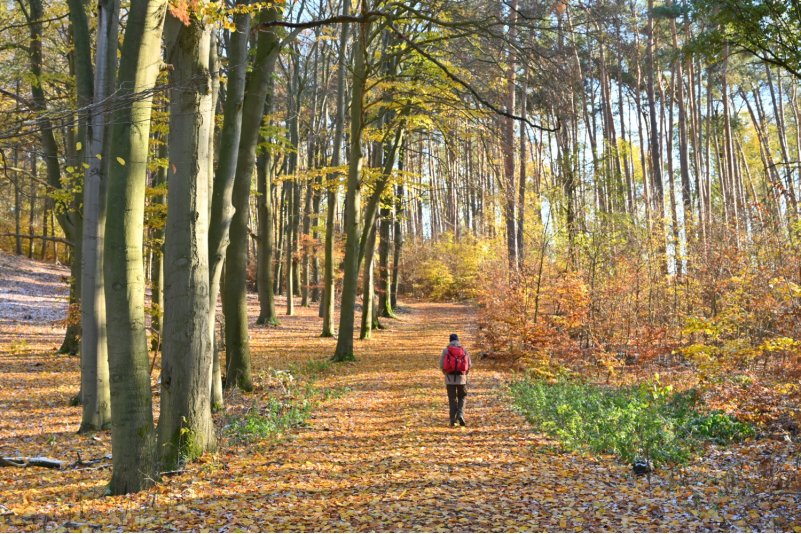
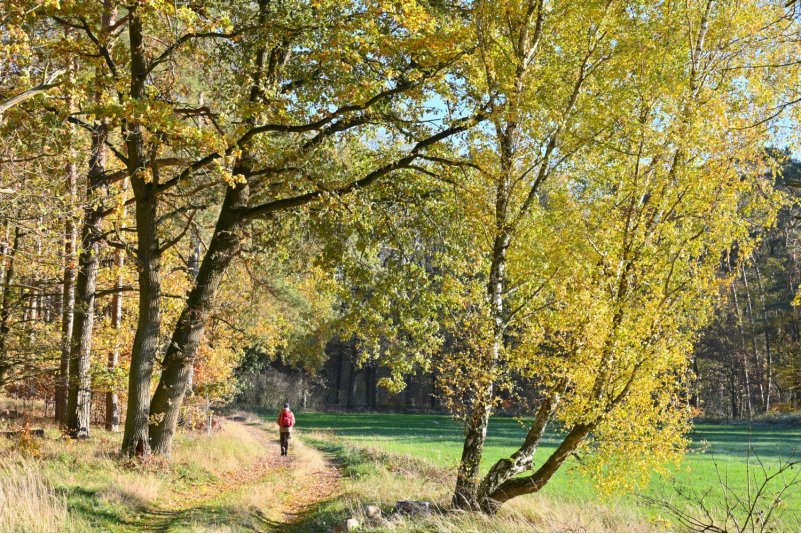

A very special highlight not far from the path are two beech trees (Fagus sylvatica), which are connected to each other by a firmly intergrown branch bridge, a so-called Reck beech. In a true intergrowth, an exchange of fluids and nutrients also takes place via the branch bridge through the flow of sap via connected conduits; one tree feeds the other. If this is not the case, the connecting branch would quickly die and rot. A special form of this connection are "two-legged" trees, where two trunks unite and merge into a joint trunk with a joint crown. This phenomenon is particularly common in beech and hornbeam, but also in oak and pine trees.
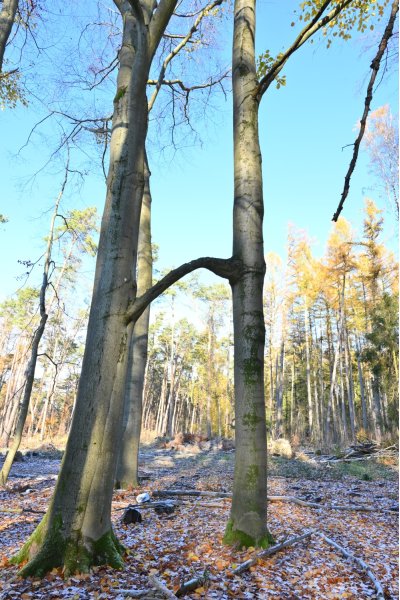

Back to the beginning
All photos and texts on this site are, unless otherwise expressly noted, protected by copyright. Each publication requires the permission of the author/photographer.
